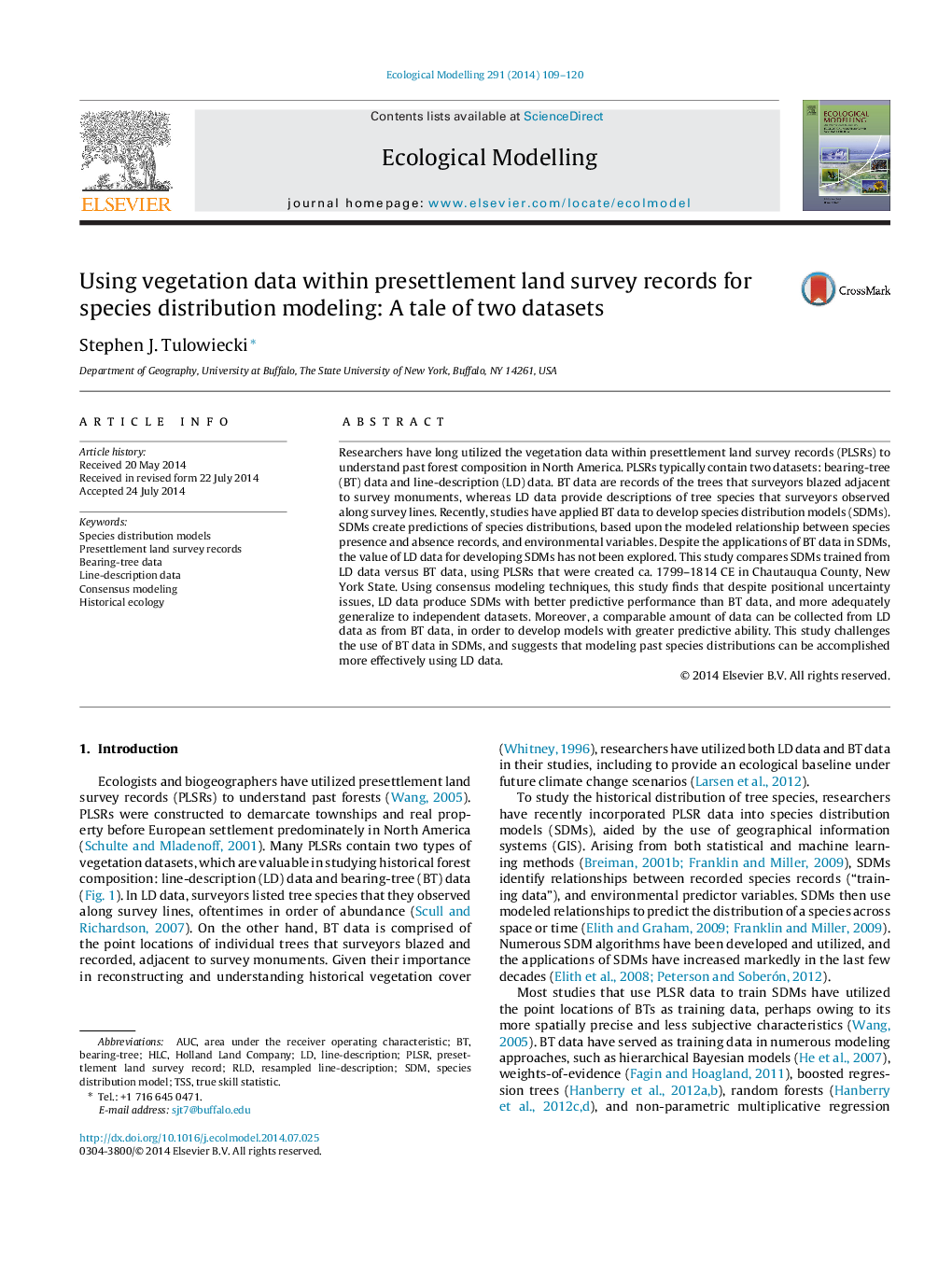| Article ID | Journal | Published Year | Pages | File Type |
|---|---|---|---|---|
| 6296745 | Ecological Modelling | 2014 | 12 Pages |
Abstract
Researchers have long utilized the vegetation data within presettlement land survey records (PLSRs) to understand past forest composition in North America. PLSRs typically contain two datasets: bearing-tree (BT) data and line-description (LD) data. BT data are records of the trees that surveyors blazed adjacent to survey monuments, whereas LD data provide descriptions of tree species that surveyors observed along survey lines. Recently, studies have applied BT data to develop species distribution models (SDMs). SDMs create predictions of species distributions, based upon the modeled relationship between species presence and absence records, and environmental variables. Despite the applications of BT data in SDMs, the value of LD data for developing SDMs has not been explored. This study compares SDMs trained from LD data versus BT data, using PLSRs that were created ca. 1799-1814 CE in Chautauqua County, New York State. Using consensus modeling techniques, this study finds that despite positional uncertainty issues, LD data produce SDMs with better predictive performance than BT data, and more adequately generalize to independent datasets. Moreover, a comparable amount of data can be collected from LD data as from BT data, in order to develop models with greater predictive ability. This study challenges the use of BT data in SDMs, and suggests that modeling past species distributions can be accomplished more effectively using LD data.
Keywords
Related Topics
Life Sciences
Agricultural and Biological Sciences
Ecology, Evolution, Behavior and Systematics
Authors
Stephen J. Tulowiecki,
